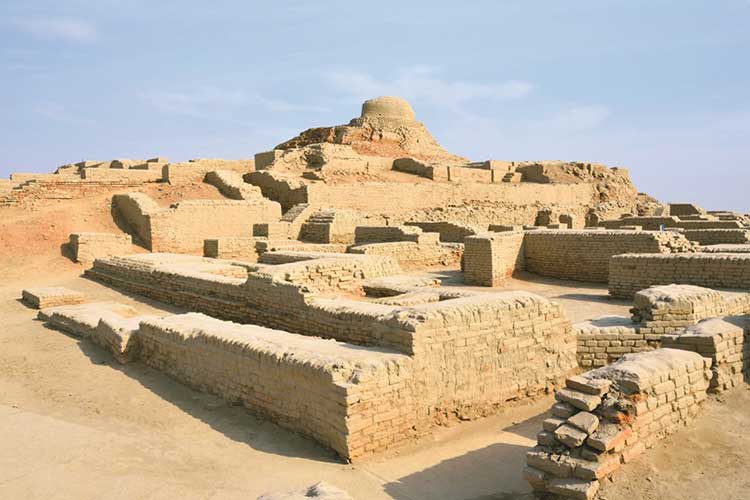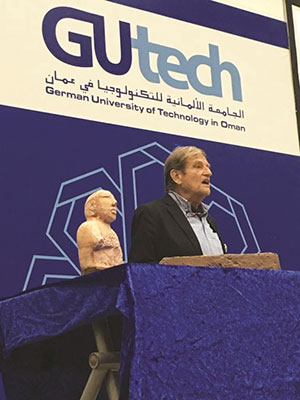For more than 30 years, Prof. Dr. Michael Jansen, the founding Rector of the German University of Technology in Oman (GUtech) and currently the Director of the Indian Ocean Research Center at GUtech and UNESCO Senior Expert, has been working along with an international team of researchers from Germany, Italy and the US on excavating the sites of Mohenjo-Daro (‘The Hill of the Dead’).
At a recent presentation of his research and work on the archaeological site at GUtech, he said, “Our recent discoveries have proved that the site is at least two times larger than that is seen today. The major part of it has been covered in the past 4500 years by the siltation process of the Indus. New research, which will be carried out from February 2018 onwards, by me and my team, will open a new chapter of research for this civilisation and will provide further evidence of the real size of the city.”
Located in the Indus Valley, in the province of Sindh, Pakistan, it is one of the largest Bronze Age cities of the third Millennium BC. In 1979 Mohenjo-Daro was placed as one of the first archaeological sites internationally on the UNESCO World Heritage List. The city was discovered by archaeologists around 100 years ago, and only 10 percent of the city has been excavated so far. “It appears that the city was located within a large settlement network. It was an administrative, managerial centre, without major production zones. After a slow degrading, the city was finally abandoned around 1,500 BC,” said Prof. Jansen.
The research of Prof Jansen and his team from RWTH Aachen University (GUtech’s German partner-university), has shown that Mohenjo-Daro probably was once the first pre-planned city of the world, built on artificial platforms to protect the inhabitants against the annual summer inundation of the river Indus.
According to Prof. Jansen, since the damming of the river Indus in the 19th century and since the beginning of artificial irrigation in 1930 of an area covering almost the whole Lower Sindh, Mohenjo-Daro is under enormous threat of destruction by salts rising through the irrigation process to the surface. From 1979 to 1997 UNESCO launched its largest campaign so far for the safeguarding of Mohenjo-Daro. Within this large program Prof. Jansen and his team were engaged to develop a conservation method to save the excavated city brick walls. Finally it was decided to cover the original brick fabric with a thin layer of mud.

An ambitious preservation scheme has been underway for many years. The tribe of Mohanas, river nomads, living till today on boats on the Indus river close by Mohenjo-Daro and on the near-by Manchhar Lake may be a remaining part of the ancient population. Until now little is known about the script of the Indus civilization. Prof. Jansen is planning to establish an international society for the promotion of Mohenjo-Daro, the probably largest city of mankind in the third millennium BC. The Research Center Indian Ocean at GUtech will be an essential partner to reach this goal.
Also read about the Drum Circle.

